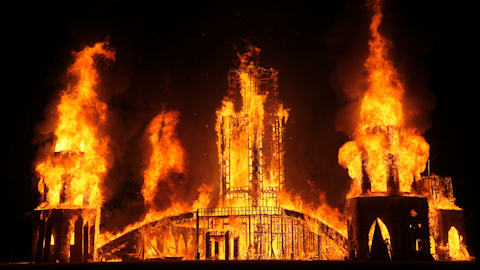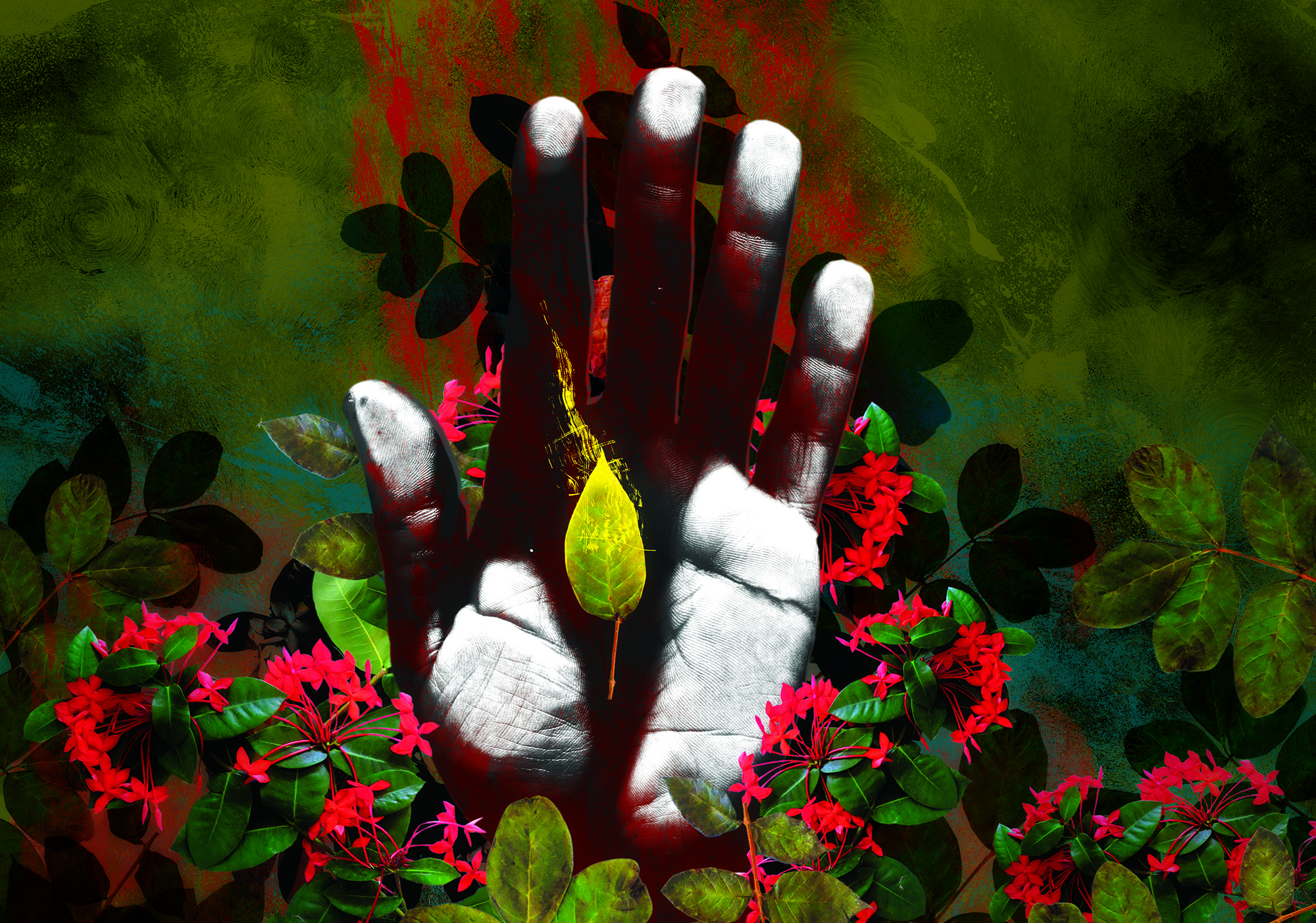 This year’s Burning Man festival featured a temple, built by hundreds of artists in the space of a few days. There are not many photographs I can link into this article. The majority of them have been destroyed, along with the temple itself.
This year’s Burning Man festival featured a temple, built by hundreds of artists in the space of a few days. There are not many photographs I can link into this article. The majority of them have been destroyed, along with the temple itself.
Some participants of the festival, which takes place in Nevada’s Black Rock Desert, have expressed that it seems a shame, or that they can’t help but have mixed feelings about destroying something to which they have dedicated a colossal amount of effort. Others enjoy the fact that they are burning their creations, the making of which they were able to focus on without the nagging distraction of feeling compelled to sell afterwards.
I have never been to Burning Man or anything overly comparable, however in November 2011, I went to the Artist’s Bonfire at the Islington Mill in Manchester. As with Burning Man, the premise is that primal expressions of self can still exist in a modern day context, a context which involves health and safety regulations, and in some cases arts council funding.
I was amused and surprised by the Telegraph’s backlash against the event, which subsequently added to it an even greater feeling of illicitness, that then became mixed with feelings of uncertainty. I had hoped that by going I would be making a small statement against drives towards profit, popularity and ego, which, in my mind should have little to do with artistic experience. But then I decided that, if any profits were made out of a bunch of artists burning their work, then whoever took that money is surely coming from the same mindset that I was naively seeking to undermine.
When it came to it, my contribution to the experience was a cop-out. There were students burning sculptures of cities that had required blueprints in order to build them (the blueprints were burned too). A professional artist immolated an extraordinary self portrait, which leads to other questions: Is it a form of self harm? Does it matter if it is? Is it a simple purging of the painfulness of being painstaking? Was I attempting to self-promote through annihilation?
I was nervous when it was my turn to throw to the fire. Even though all I burned was something that was made in a digital format, and which was backed up on several mediums of hard drive. In fact, due to laziness, what I threw onto the fire was a completely blank disc. I made a shaky speech about the wonders of modern technology, how its capacity for preservation means that the destruction of art is nothing to fear.
Age old connotations regarding censorship make these occasions worrying. There are Hitler’s book burnings and the equally insane pyres overseen by a chief of the NYC police department in connection with the Occupy movement. Luckily the worst case I’ve witnessed in the flesh was a ridiculously puerile feud between two local entertainment guides, which culminated in a brief burning in the car park of a small music venue.
A more historical instance is the destruction of the work of the poet Sappho. That much of her work appears now to be in fragments seems to overshadow it in the minds of many of her critics, shrouding her work and its context in a series of fascinating myths. These myths raise such questions as ‘has the work been destroyed by natural causes?’ and ‘was her work smashed by jealous invaders who not only begrudged her of her art but scorned her sexuality?’ Sappho, for whatever reasons, may also have felt it necessary to destroy the poems herself.
Earlier this year, experimental pop artist Grimes blogged about techno band The KLF, mentioning their decision to burn a million pounds.
Bill Drummond explained: “We wanted the money, but we wanted to burn it more.”
For Grimes and TheWoodQuarter, this stunt feels uncomfortable, compromising the artistic integrity of an otherwise respectable band: “it’s not something you would do if you had ever experienced poverty”.
Their concern echoes The Guardian’s review of Mark Knoop’s Piano Activities, a concert in which the pianist destroyed his piano. I might have been inclined to concur with the reviewer’s outrage were it not for his total denial of destructive relevance, which he deems “creatively redundant” post John Cage and punk. Although the reviewer is careful to state that “censoring [artists] would indeed have been wrong”, he makes the claim that “destructive performance misreads the temperature of a culture where a siege mentality reigns”. This is compounded with dogma: “Once music has been razed to the ground by Cage, Paik and others, it’s time to build”.
For me, such argument is a form of destruction in itself. It is more dangerous than a person trashing his own piano because it seeks to persuade that there is a specific and given “time” for a specific and given artistic ethos. A stance that requires art to be an advantageous strategic building block further entrenches it within the realm of commodity.
This article was posted on 3 Jan 2014 at indexoncensorship.org




